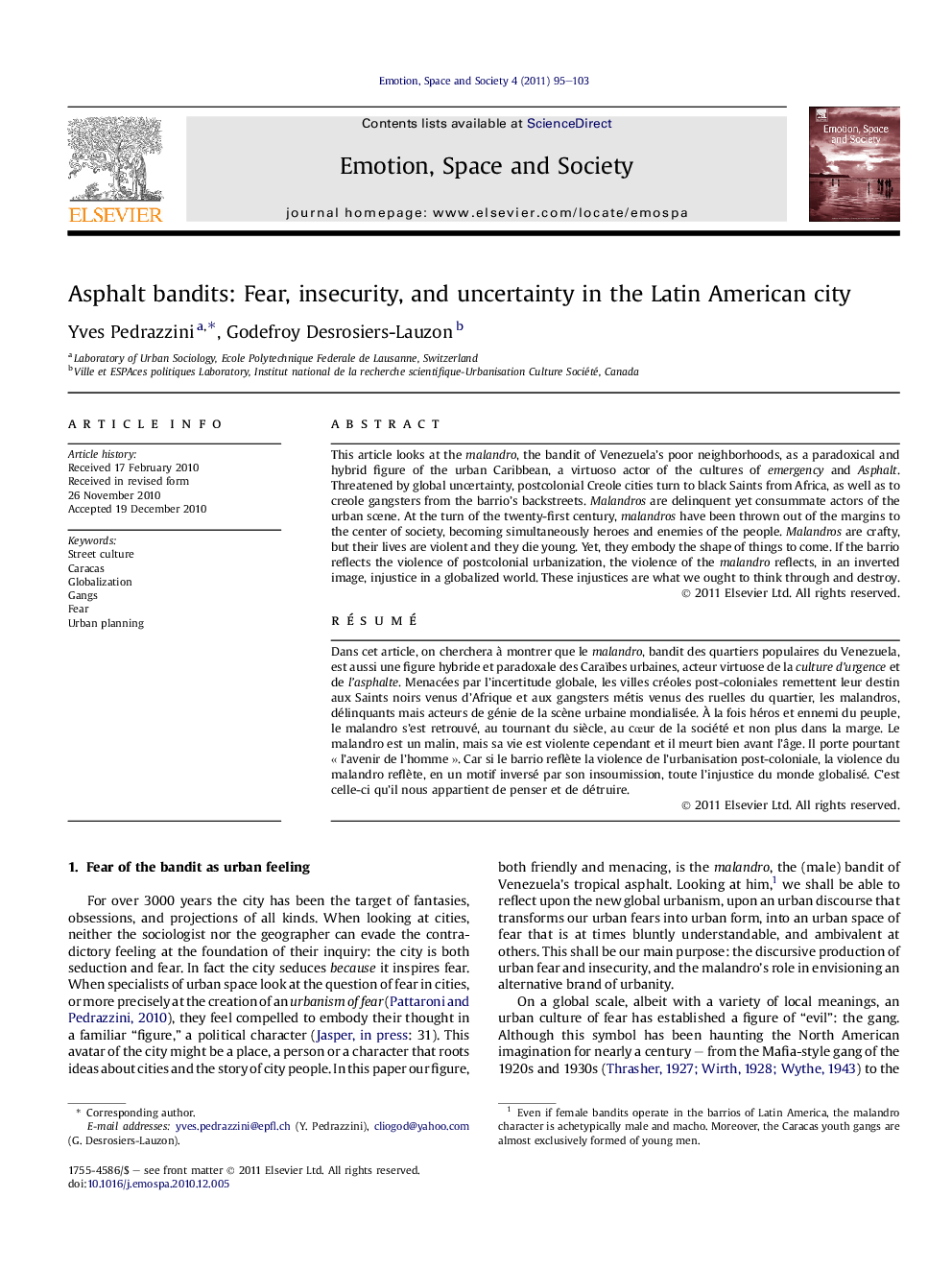| کد مقاله | کد نشریه | سال انتشار | مقاله انگلیسی | نسخه تمام متن |
|---|---|---|---|---|
| 946876 | 926227 | 2011 | 9 صفحه PDF | دانلود رایگان |

This article looks at the malandro, the bandit of Venezuela’s poor neighborhoods, as a paradoxical and hybrid figure of the urban Caribbean, a virtuoso actor of the cultures of emergency and Asphalt. Threatened by global uncertainty, postcolonial Creole cities turn to black Saints from Africa, as well as to creole gangsters from the barrio’s backstreets. Malandros are delinquent yet consummate actors of the urban scene. At the turn of the twenty-first century, malandros have been thrown out of the margins to the center of society, becoming simultaneously heroes and enemies of the people. Malandros are crafty, but their lives are violent and they die young. Yet, they embody the shape of things to come. If the barrio reflects the violence of postcolonial urbanization, the violence of the malandro reflects, in an inverted image, injustice in a globalized world. These injustices are what we ought to think through and destroy.
RésuméDans cet article, on cherchera à montrer que le malandro, bandit des quartiers populaires du Venezuela, est aussi une figure hybride et paradoxale des Caraïbes urbaines, acteur virtuose de la culture d’urgence et de l’asphalte. Menacées par l’incertitude globale, les villes créoles post-coloniales remettent leur destin aux Saints noirs venus d’Afrique et aux gangsters métis venus des ruelles du quartier, les malandros, délinquants mais acteurs de génie de la scène urbaine mondialisée. À la fois héros et ennemi du peuple, le malandro s’est retrouvé, au tournant du siècle, au cœur de la société et non plus dans la marge. Le malandro est un malin, mais sa vie est violente cependant et il meurt bien avant l’âge. Il porte pourtant « l’avenir de l’homme ». Car si le barrio reflète la violence de l’urbanisation post-coloniale, la violence du malandro reflète, en un motif inversé par son insoumission, toute l’injustice du monde globalisé. C’est celle-ci qu’il nous appartient de penser et de détruire.
Journal: Emotion, Space and Society - Volume 4, Issue 2, May 2011, Pages 95–103